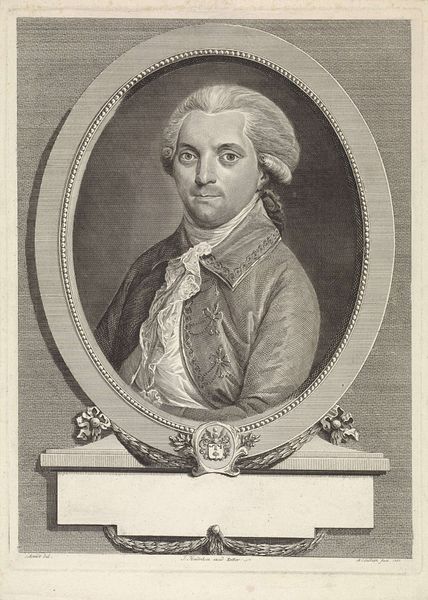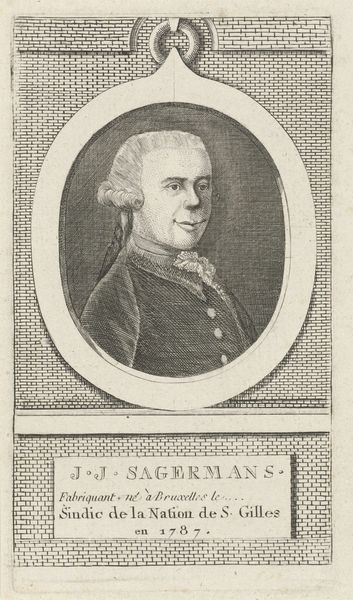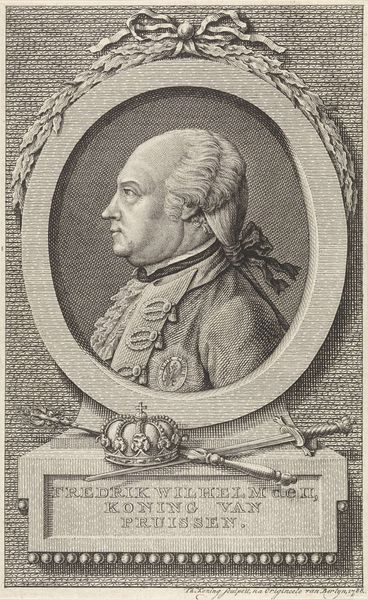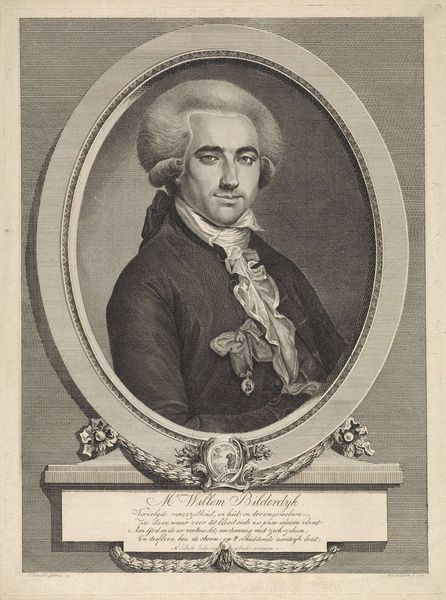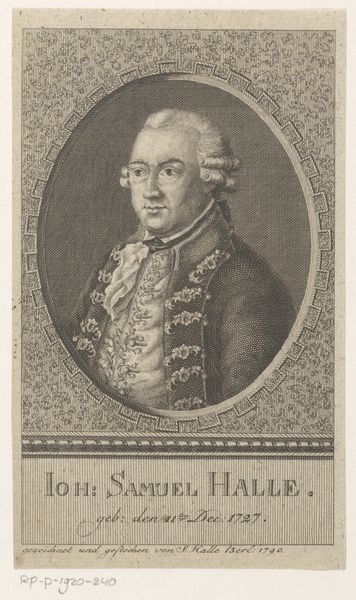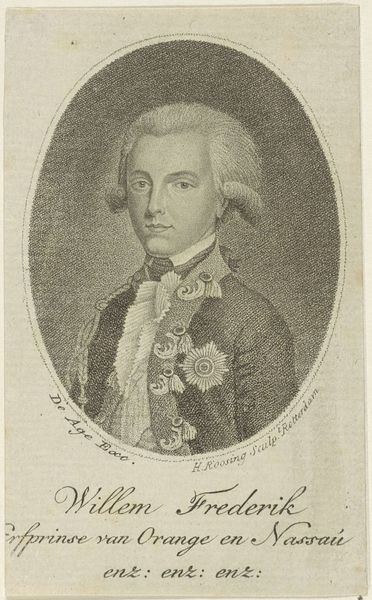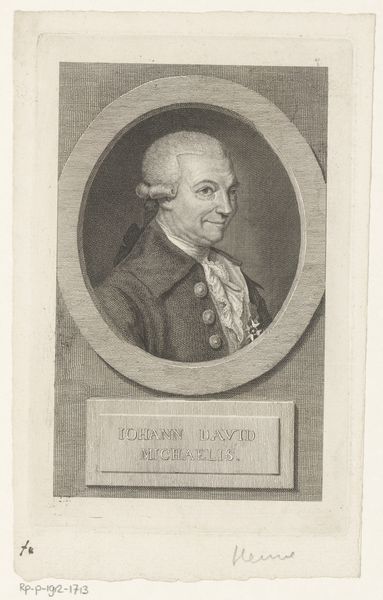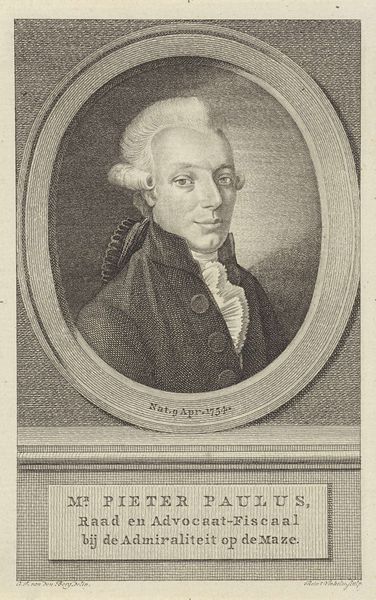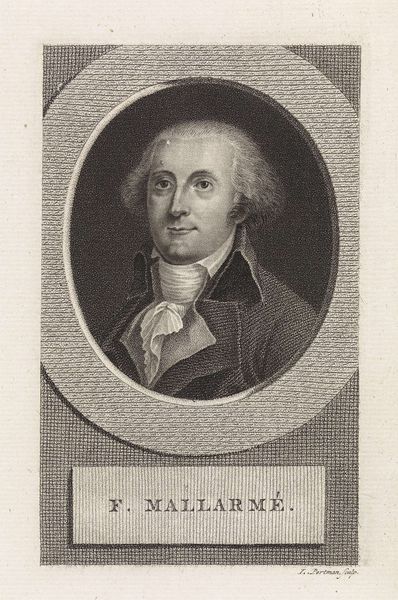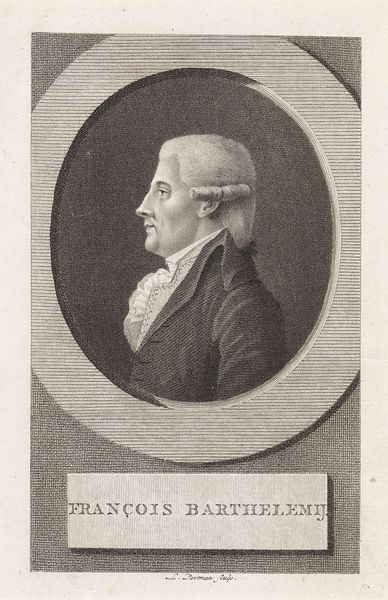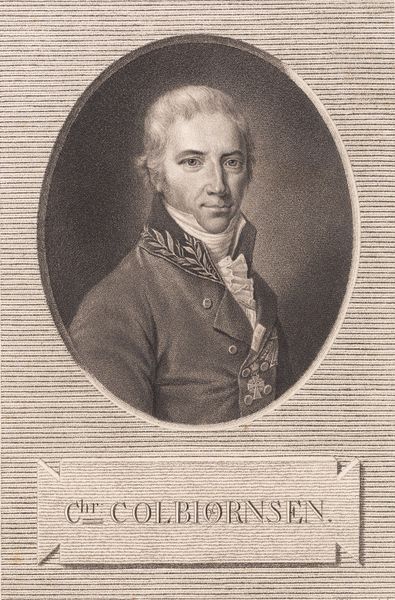
print, engraving
#
portrait
#
neoclacissism
# print
#
old engraving style
#
history-painting
#
engraving
Dimensions: height 102 mm, width 68 mm
Copyright: Rijks Museum: Open Domain
Curator: Here we have Ludwig Gottlieb Portman's engraving, a print entitled "Portret van de zeevaarder James Cook," made around 1802. What strikes you first about it? Editor: The graphic starkness. It’s all clean lines and high contrast. There's an almost severe formality, though softened slightly by the circular frame. The texture of the engraving is mesmerizing! Curator: Indeed. Portman situates Cook, an explorer whose legacy is deeply entangled with colonialism, firmly within the visual language of the neoclassical era. Look at how the inscription naming Cook is rendered like a classical frieze, underscoring the visual trope that memorializes him as an idealized, historical figure. Editor: And there’s such a knowing, almost defiant quality in Cook’s gaze. Considering the context, it feels like a symbolic assertion of power and unwavering authority, wouldn’t you agree? Almost a God complex. Curator: It certainly invites a reading along those lines. His image has become emblematic of British exploration, yet the impact of his voyages on Indigenous populations continues to be a subject of profound ethical and historical debate. It shows a one sided perspective. Editor: The symbol of the naval uniform. It communicates duty and rank and ties in directly with concepts of both opportunity and cultural erasure. I almost want to see the maps he navigated etched into the background somehow! Curator: Interesting idea. Considering that the work exists as a print, a form allowing for widespread dissemination, it really emphasizes how carefully controlled the visual narrative around Cook was, then and even now. Whose story gets told, and how? It's really more relevant than ever today. Editor: Absolutely. This exploration has truly stirred deeper insight into our complex interpretations of history.
Comments
No comments
Be the first to comment and join the conversation on the ultimate creative platform.
